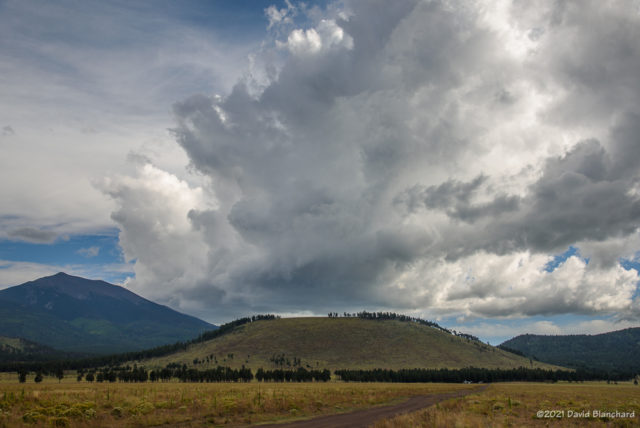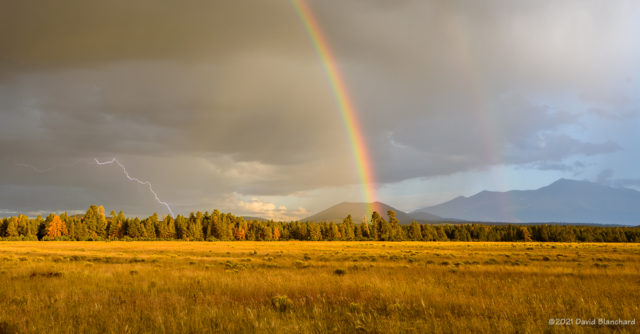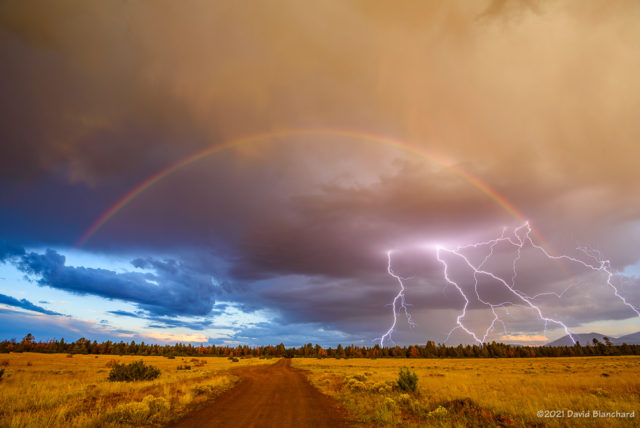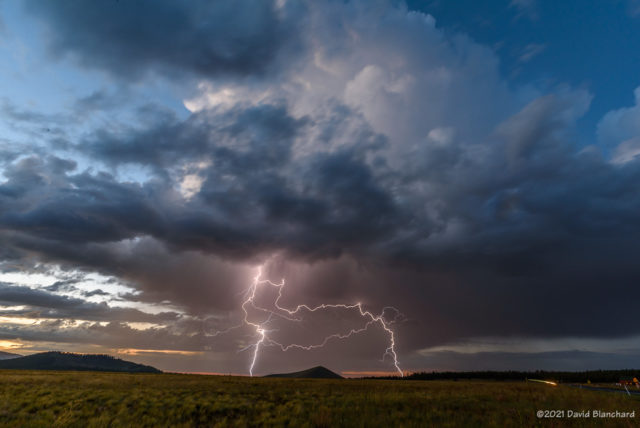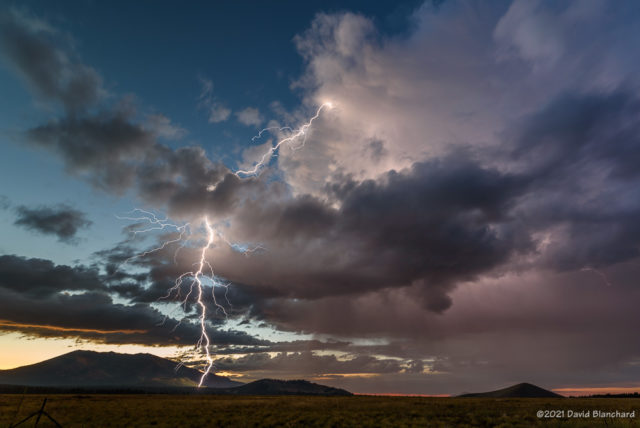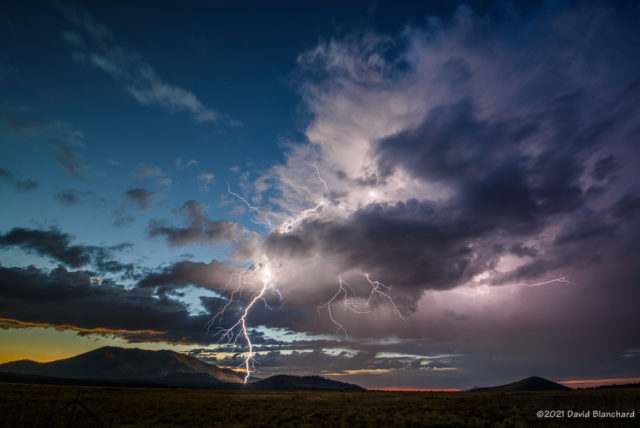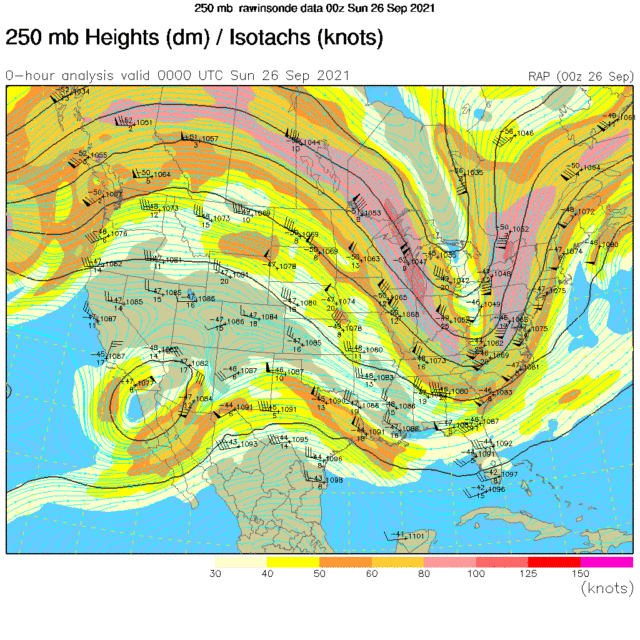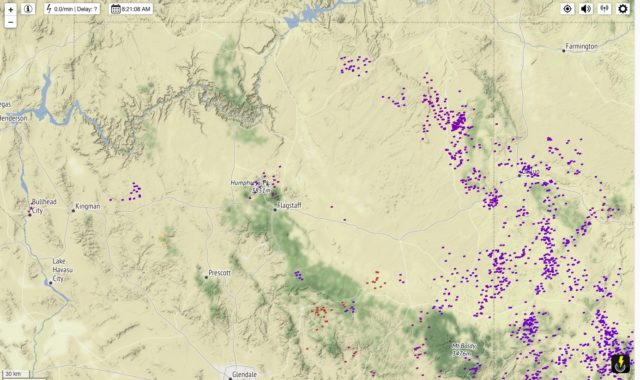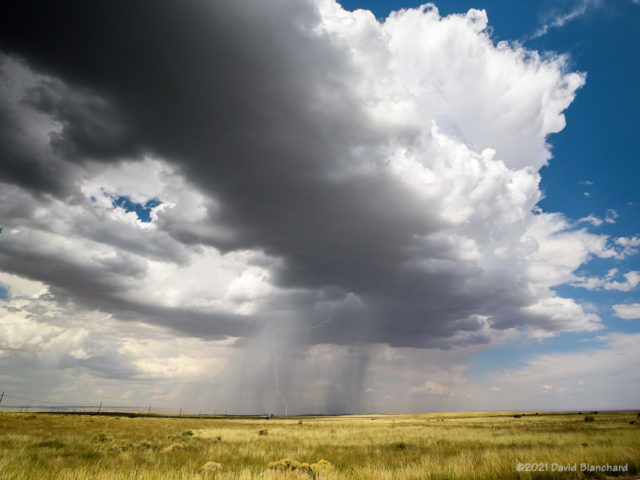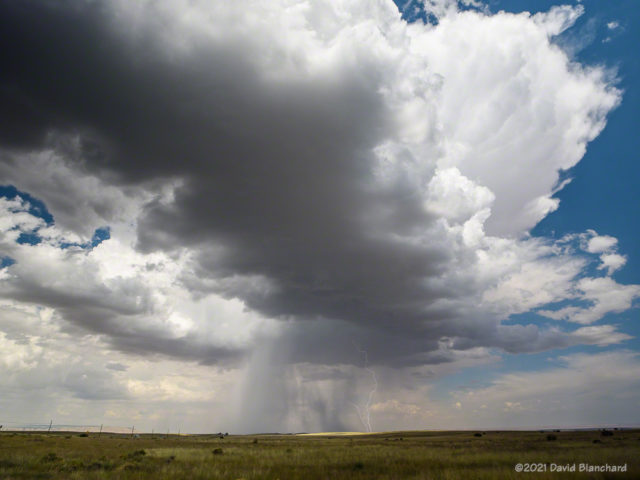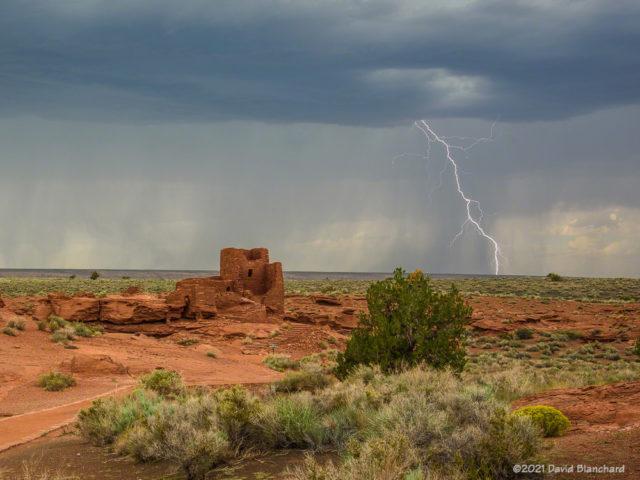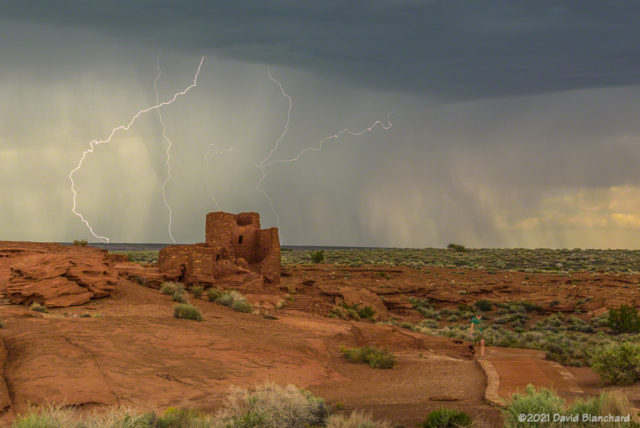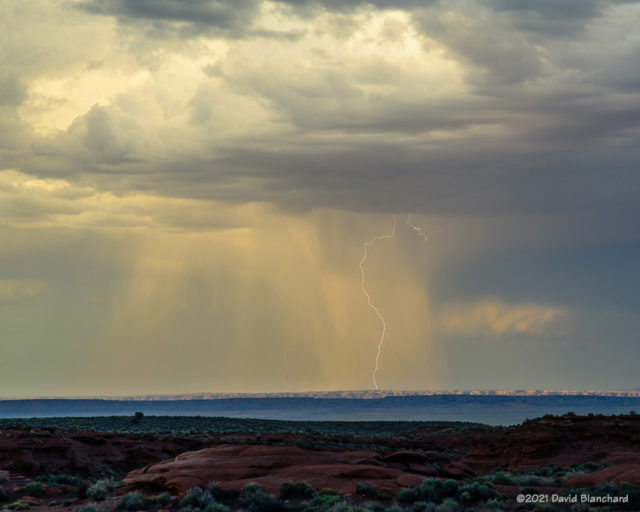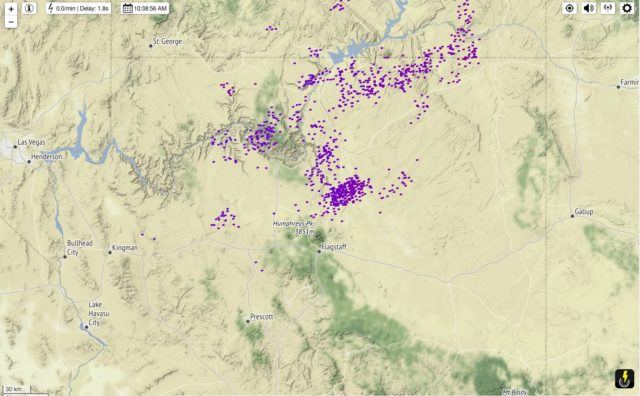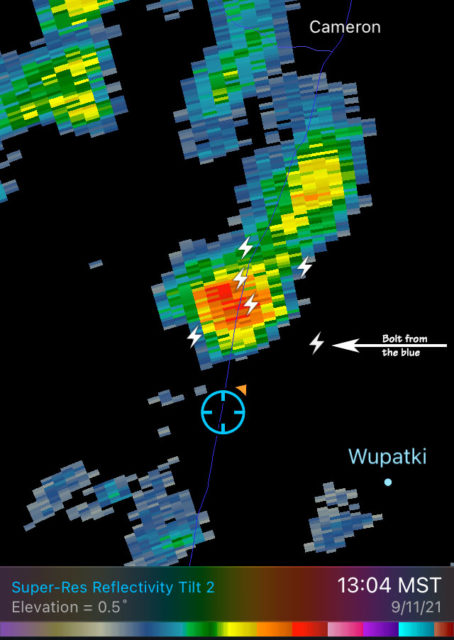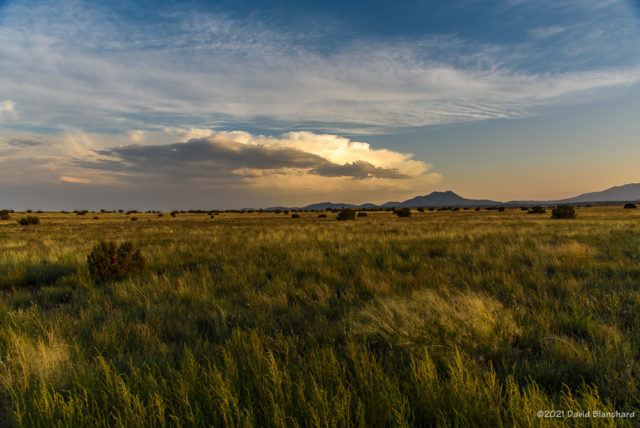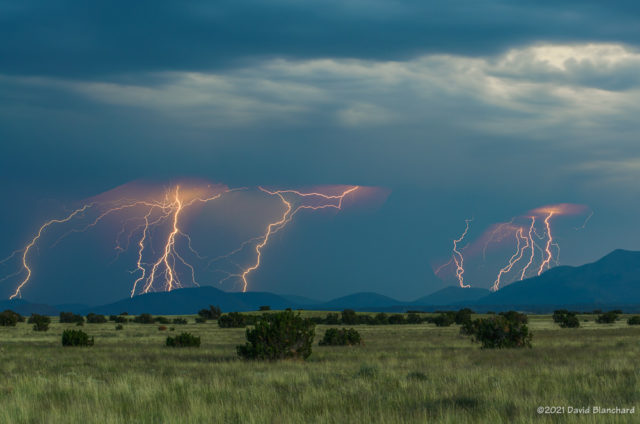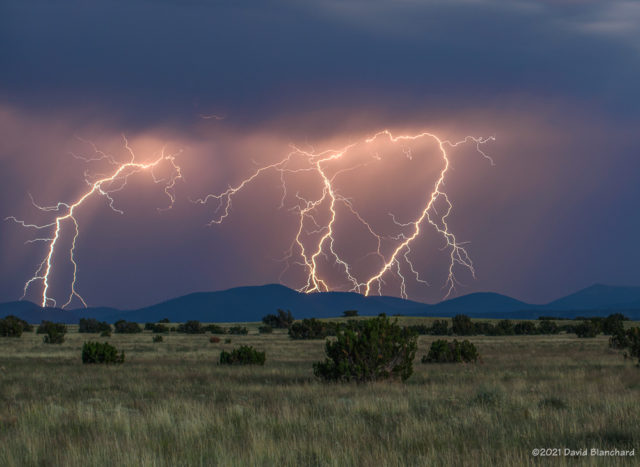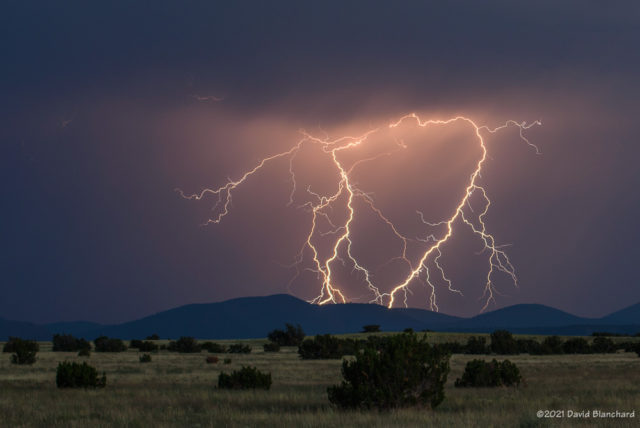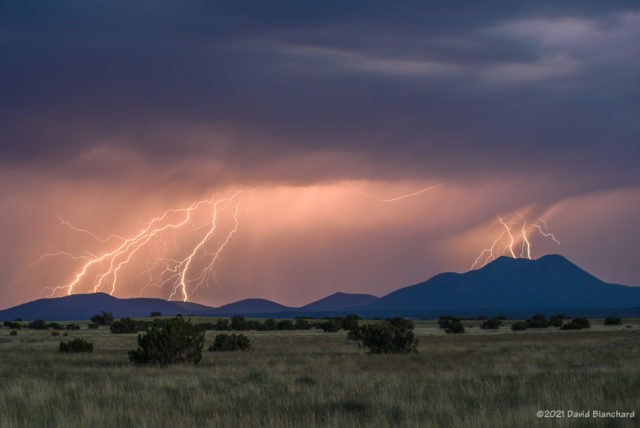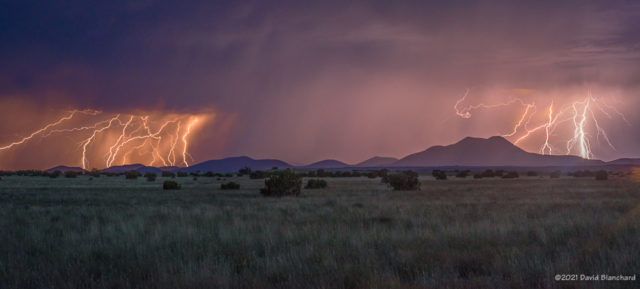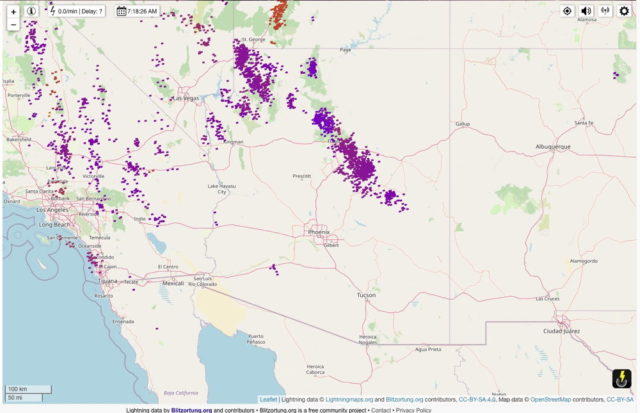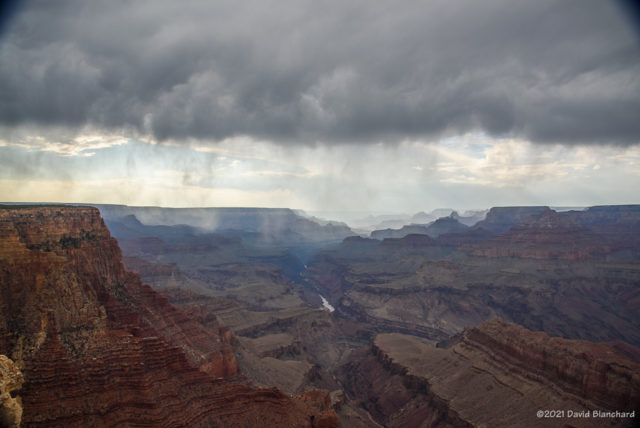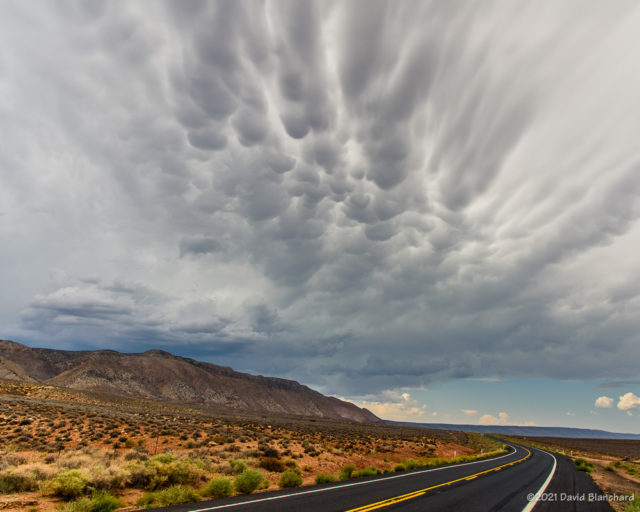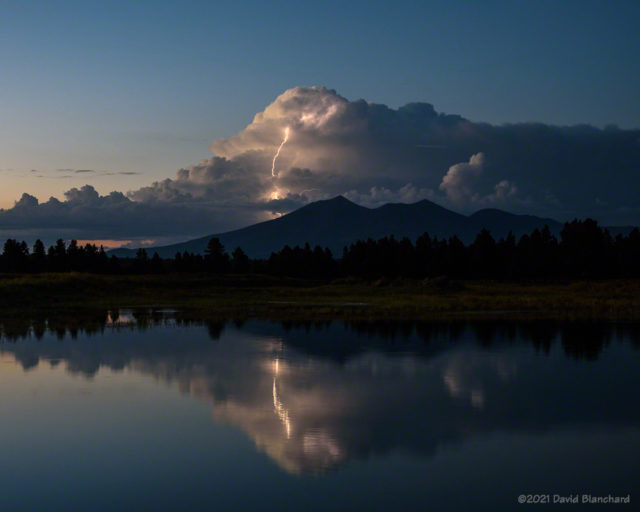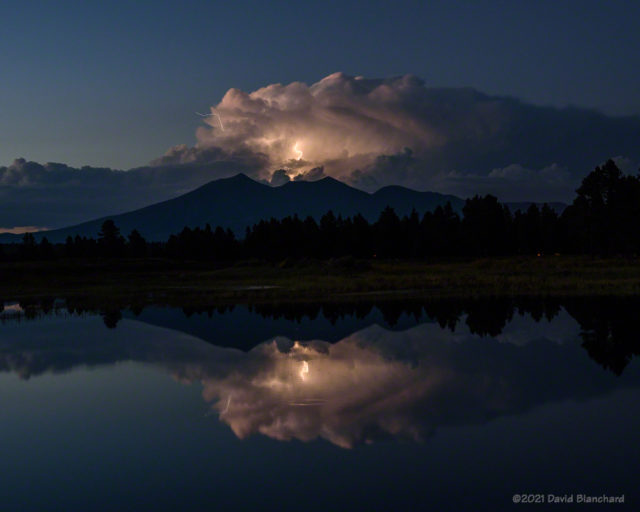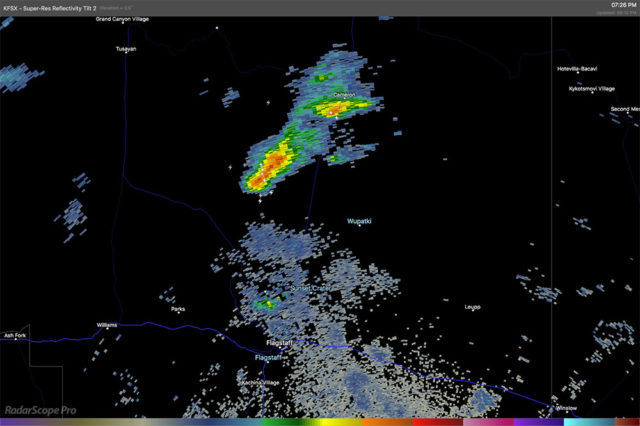A strong storm system approached the southwest yesterday and moved through the state overnight. Ahead of the storm, clouds began to increase just before sunset and I found myself at the Mormon Lake overlook. The cumulus clouds were fairly shallow so that the sunlight hitting the tops of the clouds was scattered downward and provided some diffuse lighting and color to the cloud bases.
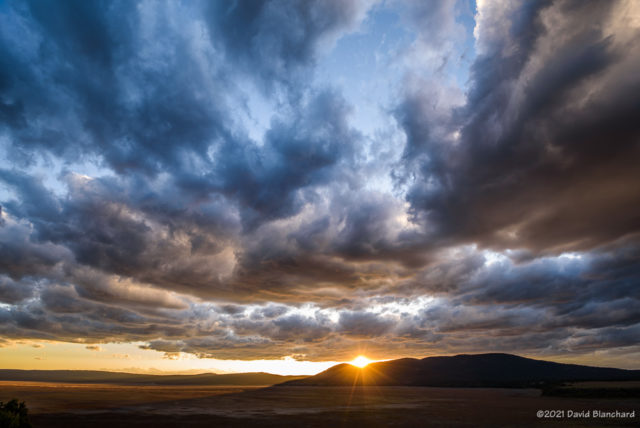
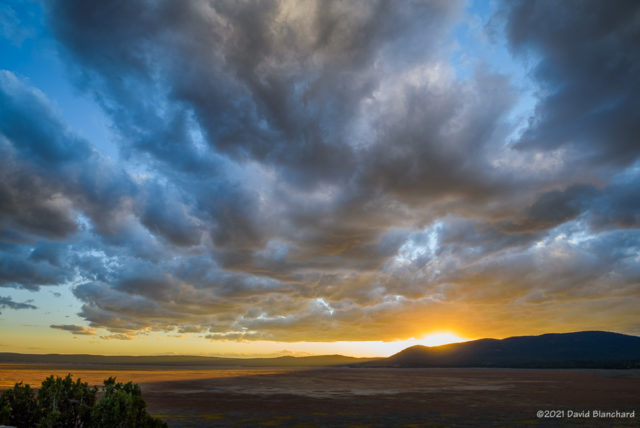
There was also a thin gap between the clouds and the ground allowing for just a few minutes of direct sunlight.
Here are a few photographs of the sunset and clouds along with some sunlight spilling across the currently dry lakebed of Mormon Lake.
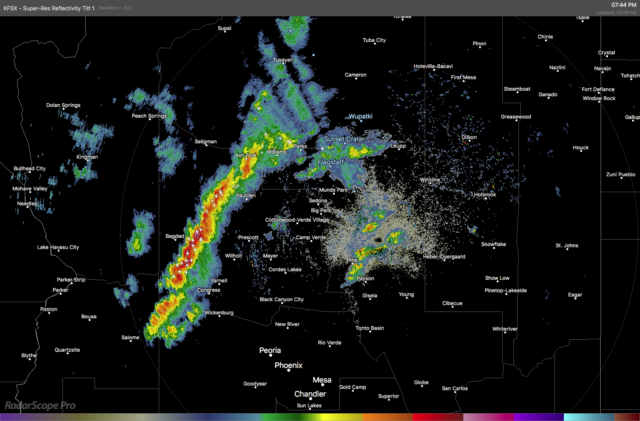
As the storm and cold front approached showers and thunderstorms quickly developed with a line of strong thunderstorms developing about an hour after sunset. There was quite a bit of lightning as the line of storms moved across the area. The sound of rain faded as it was replaced by snow falling in the wake of the front.
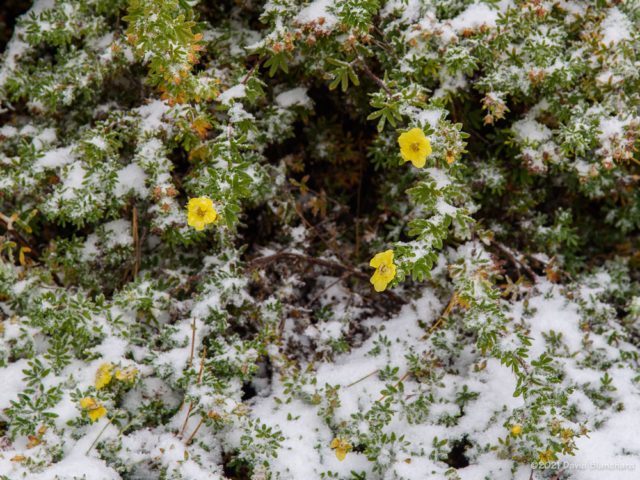
In the morning there was snow covering the ground. Measurements were difficult as strong winds during the night had blown the snow such that some areas had a few inches and other areas were bare.
The snow juxtaposed with autumn colors was very pretty but my favorite photograph was the snow on this cinquefoil that still has some flowers.
